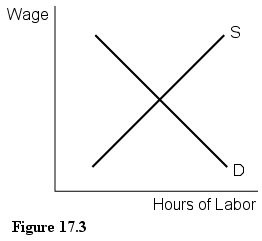In the ultimatum game:
A. is a multi-stage game where one player (the proposal) offers to give the second player (the recipient) some share of a fixed prize; the recipient then decides whether to accept or reject the proposal.
B. is a single-stage game where one player (the proposal) offers to give the second player (the recipient) some share of a fixed prize; the recipient then decides whether to accept or reject the proposal.
C. is a multi-stage game where one player (the proposal) divides a fixed prize between himself and another player (the recipient) who is an passive participant.
D. is a single-stage game where one player (the proposal) divides a fixed prize between himself and another player (the recipient) who is an passive participant.
A. is a multi-stage game where one player (the proposal) offers to give the second player (the recipient) some share of a fixed prize; the recipient then decides whether to accept or reject the proposal.
You might also like to view...
The figure above shows the loanable funds market. The equilibrium real interest rate is ________ percent, and the equilibrium quantity of loanable funds is ________
A) 4; $1.4 trillion B) 6; $1.6 trillion C) 4; $1.8 trillion D) 8; $1.8 trillion E) 8; $1.4 trillion
If in a perfectly competitive industry, the market price facing a firm is below its average total cost but above average variable cost at the output where marginal cost equals marginal revenue
A) the industry supply will not change. B) firms are breaking even. C) some existing firms will exit the industry. D) new firms are attracted to the industry.
If the public decides to hold more currency and fewer deposits in banks, bank reserves
a. decrease and the money supply eventually decreases. b. decrease but the money supply does not change. c. increase and the money supply eventually increases. d. increase but the money supply does not change.
 In Figure 17.3, a decrease in the supply of labor will cause the equilibrium:
In Figure 17.3, a decrease in the supply of labor will cause the equilibrium:
A. wage and hours of labor used to increase. B. wage and hours of labor used to decrease. C. wage to increase and hours of labor used to decrease. D. wage to decrease and hours of labor used to increase.